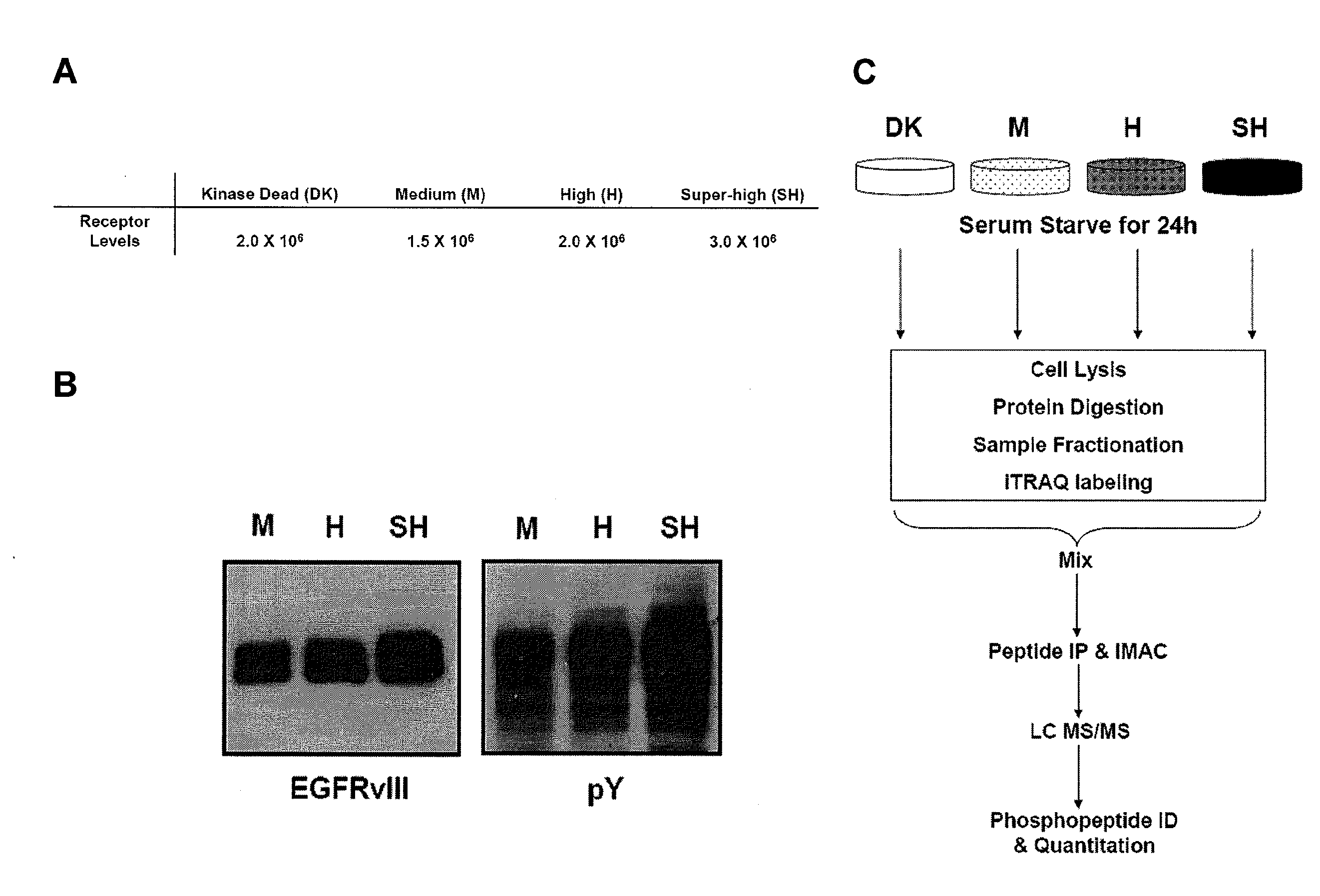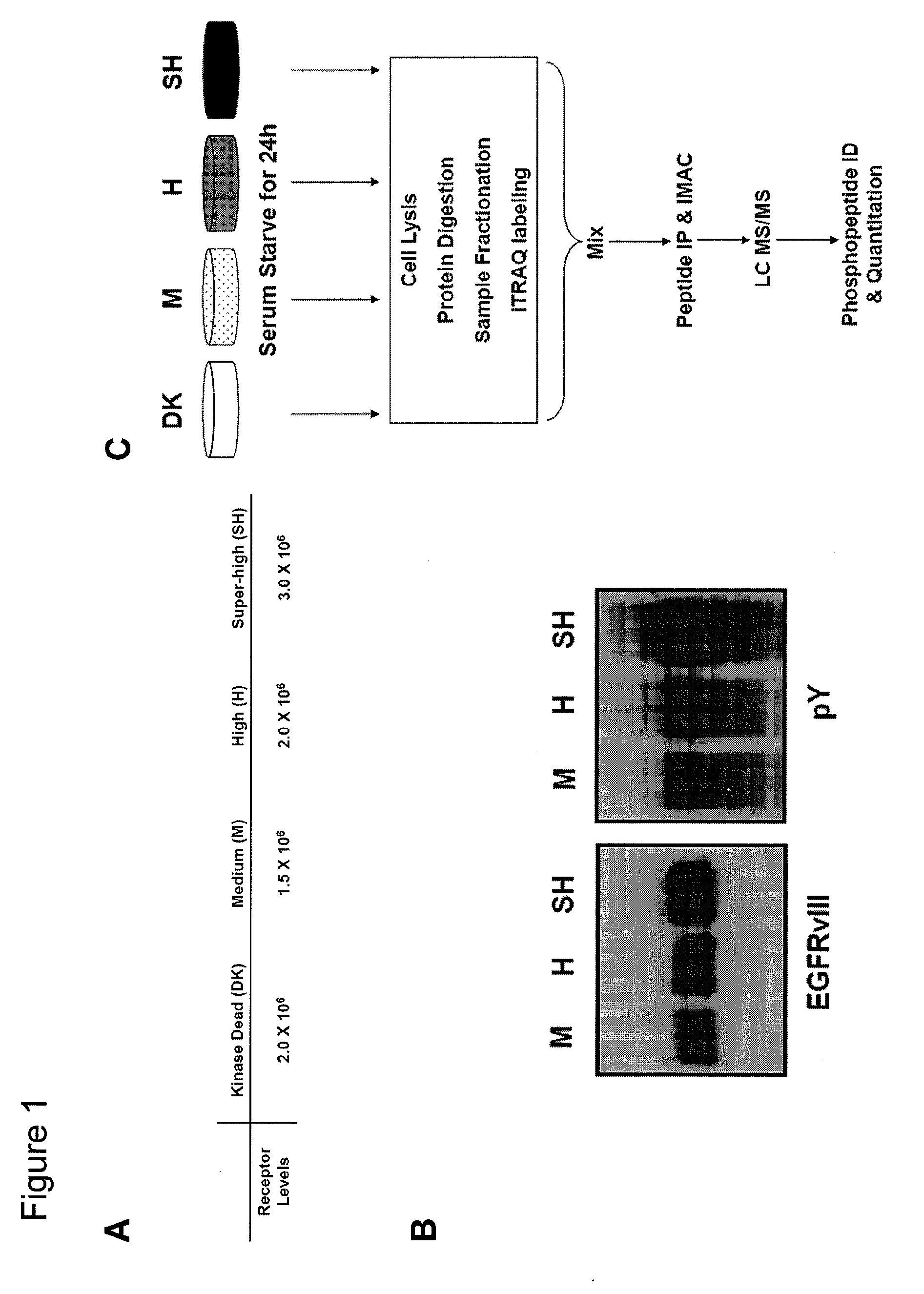Methods for treating cancers associated with constitutive EGFR signaling
a cancer and constitutive egfr technology, applied in the field of constitutive egfr signaling cancer treatment methods, can solve the problems of poor prognosis of patients with these cancers, and achieve the effects of decreasing the growth and reducing the proliferation and/or viability of a cell
- Summary
- Abstract
- Description
- Claims
- Application Information
AI Technical Summary
Benefits of technology
Problems solved by technology
Method used
Image
Examples
example 1
Quantitative Analysis of EGFRvIII Cellular Signaling Networks Reveals a Novel Combinatorial Therapeutic Strategy in Glioblastoma
[0086]Glioblastoma multiforme (GBM) is the most aggressive form of adult human brain tumor with median survival of less than 12 months. This dismal prognosis is due in part to the lack of therapeutic agents available to eliminate the diffused glioma infiltrate that remains in the brain after surgical resection. In this study, a previously described mass spectrometry-based phosphoproteomics approach was used to quantitatively map cellular signaling events activated by the EGFRvIII receptor as a function of titrated receptor levels. This systems-level strategy has provided new insights into the biology of the EGFRvIII receptor and has identified the c-Met receptor as a novel target for the treatment of EGFRvIII expressing tumors.
Materials and Methods:
Sample Preparation, Peptide IP and Mass Spectrometry
[0087]U87MG cells expressing titrated levels of EGFRvIII w...
example 2
[0116]A mass spectrometry-based phosphoproteomic technique was used to investigate signaling networks downstream of the EGFRvIII oncogenic receptor in U87MG glioblastoma cells. U87MG cells expressing titrated levels of EGFRvIII were maintained in DMEM medium supplemented with 10% FBS. 1.5 million cells per 10 cm plate were seeded for 24 hours. Following this, cells were washed with PBS and incubated for 24 hours in serum-free media. Cells were lysed with 8 M urea supplemented with 1 mM sodium orthovanadate (Sigma-Aldrich). For each of the two biological replicates performed, lysates from three 10 cm plates were pooled together. The samples were then further processed and labeled with the iTRAQ reagent following manufacturer's recommendations. Peptide immunoprecipitation was performed as previously described (Zhang, Y., Wolf-Yadlin, A., Ross, P. L., Pappin, D. J., Rush, J., Lauffenburger, D. A. & White, F. M. (2005) Mol Cell Proteomics 4, 1240-50), with the following exceptions: 10 μ...
PUM
 Login to View More
Login to View More Abstract
Description
Claims
Application Information
 Login to View More
Login to View More - R&D
- Intellectual Property
- Life Sciences
- Materials
- Tech Scout
- Unparalleled Data Quality
- Higher Quality Content
- 60% Fewer Hallucinations
Browse by: Latest US Patents, China's latest patents, Technical Efficacy Thesaurus, Application Domain, Technology Topic, Popular Technical Reports.
© 2025 PatSnap. All rights reserved.Legal|Privacy policy|Modern Slavery Act Transparency Statement|Sitemap|About US| Contact US: help@patsnap.com



